There’s always a demand for reproducing metallic effects that add some glitz and glamour to products or packaging, making the ability to create these effects so attractive to many print businesses.
Traditionally, metallic effects were most commonly produced by hot or cold foil stamping. And while the results can be excellent, these processes are relatively costly, complex and more suited to medium or long print runs.
Luckily, modern digital print technology provides several options to introduce metallic effects to your product range that are far more achievable for most businesses by being quicker, cheaper and more suited to short runs.
In this article, we’ll look at these methods so you can see if they’re right for your print projects.
Ways to Print Metallic Effects
From introducing new media types to being a bit more creative with your printer settings, here are the best ways to add metallic effects to your print.
Printing On Metallic Substrates
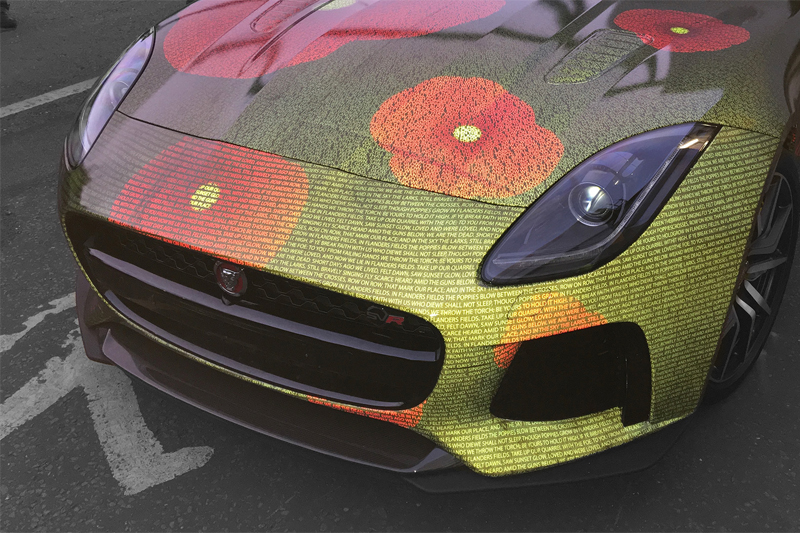
A vinyl-wrapped vehicle
Simply, use your printer to print onto a metallic substrate.
Metallic print media can deliver some brilliant, eye-catching effects suitable for all sorts of products. CMYK ink without a white ink layer typically allows the metallic appearance from the reflective surface of the media to shine through the ink to produce your desired effect. Varying the amount of ink will have an influence too, so you can achieve a variety of results just by printing directly onto a metallic surface. Holographic and reflective media, while not technically metallic effects, can produce similarly impressive results.
Metallic media is ideal for creating gift boxes and packaging that radiate quality. Brand logos also look great with a metallic effect.
Printing On Metallic Substrates with White Ink
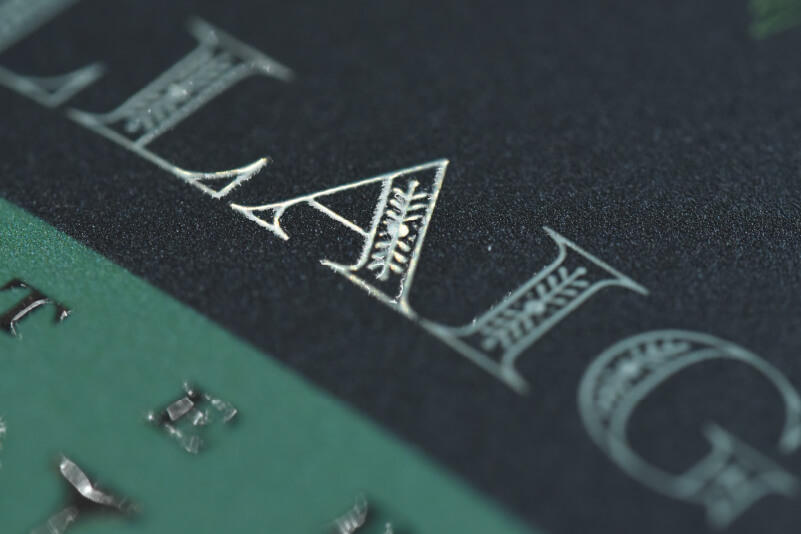
Metallic text produced by manipulating the white ink layer
As with transparent or coloured media, adding a white spot colour layer to your design can fully mask areas of the substrate to give it a different appearance. Here, the background not covered by white ink will stand out more against the masked areas. You can be very specific about what parts of the design are backed out by white and what parts will retain their transparency. This is particularly effective for applications such as packaging and personalisation.
There’s an ever-expanding number of metallic media options available in varying colours and quality, so, whether you print stickers or produce protective vehicle wraps, the list of products you can produce is significant. It’s always a good idea to speak with your media supplier to source the best option for your specific requirements.
Cutting Metallic Vinyl
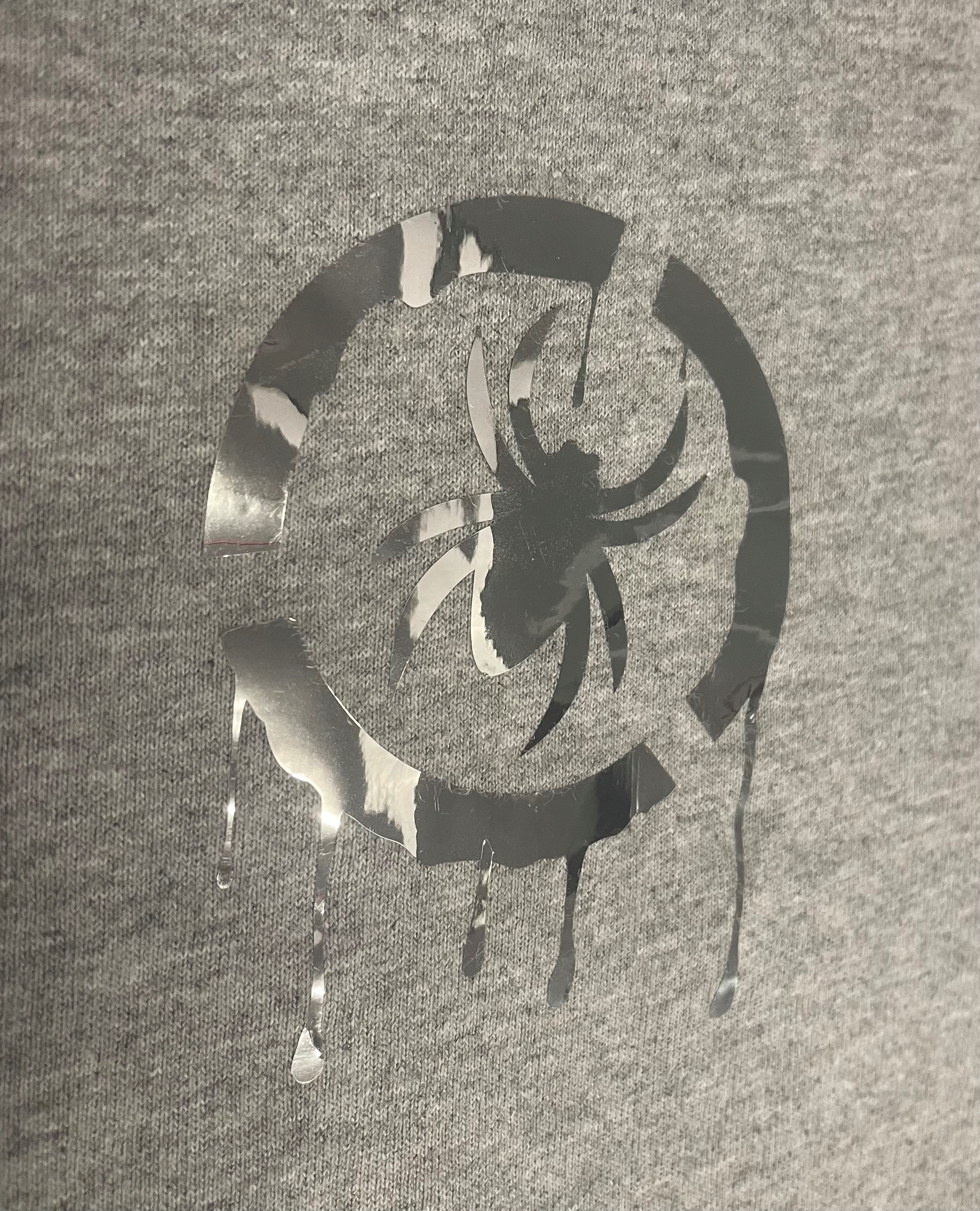
Shape cut out of metallic vinyl
Metallic vinyl has many of the qualities of standard calendered vinyl that make cutting out intricate shapes and letters with your vinyl cutter possible. As with other specialist vinyl, like glitter, it can be thicker than standard and a little more prone to tearing if not weeded carefully, but the results can be very effective and a little different to what you’d expect to see on applications like stickers or garments.
Foiling with UV Ink
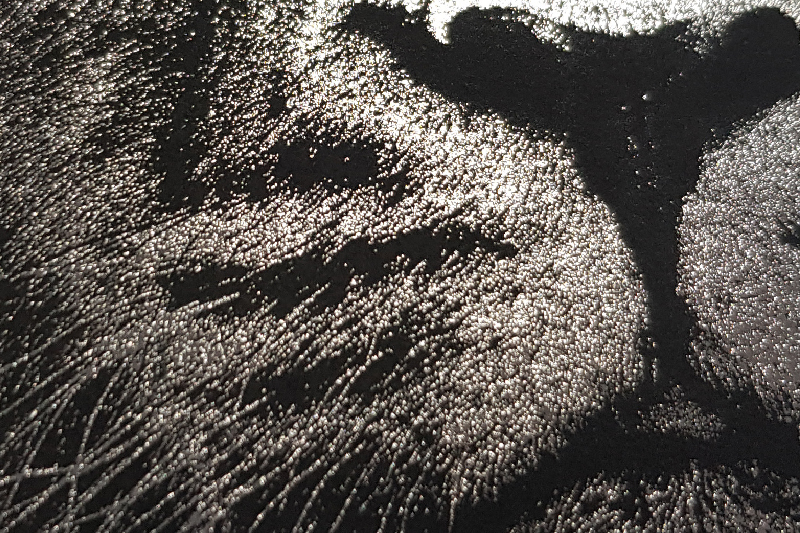
An image created by foiling
The effect of foiling can be recreated by applying gloss UV ink to specific areas of the design. Gloss ink can be part-cured on the areas of the design to have the foiling effect. It’s a simple process to change your printer settings to lower the lamp intensity in VersaWorks. Just be mindful of taking the relevant safety precautions when working with partially cured UV ink. You can then place your foil onto the design and press the print using a calender.
As the foil is peeled off, it will stick to the substrate where the part-cured gloss ink has been applied. It can then be placed back in your UV printing device to finalise the curing process using the lamp scanning only.
Laser Foiling
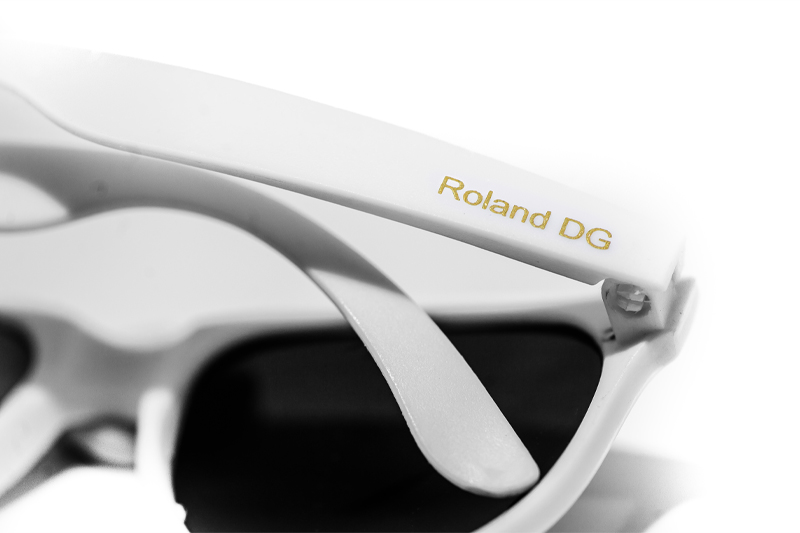
Logo on plastic sunglasses produced by laser foiling
Laser foiling involves using a laser decorator to transfer designs onto a wide range of surfaces via a process that mimics hot foil stamping. It has made foil stamping much more attainable and cost-effective, while still producing fantastic results.
Laser decorators can foil transfer onto soft plastics, paper and leather, as well as imprint directly onto natural leather, to personalise bags, gloves, or luggage tags. It is a very precise process that allows users to personalise all sorts of items in great detail, from text to intricate patterns and accurate logo reproduction.
Printing with Metallic Ink
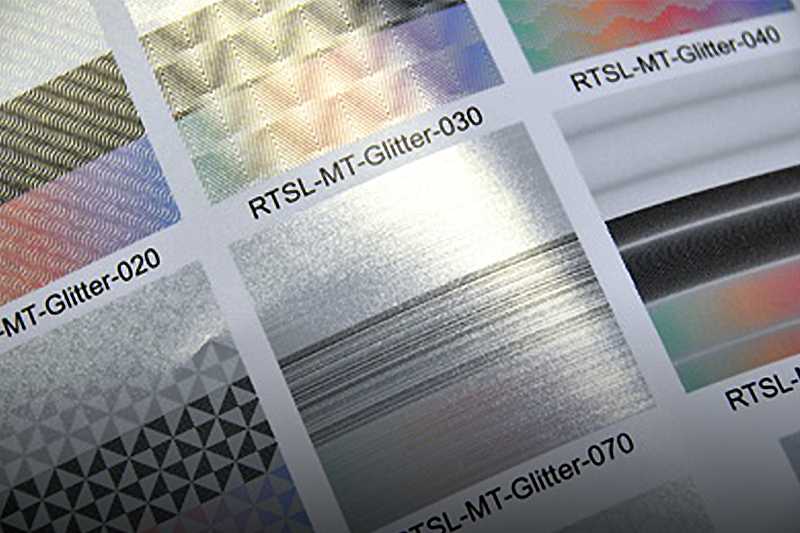
Metallic ink swatches
Modern metallic-effect inks are made with tiny reflective metallic particles suspended in the solution that join together when the ink dries (a process known as “leafing” or metal platelet technology), creating its shiny finish when light is reflected.
These inks can provide various effects, such as different shades and colours, shine and vibrancy. Roland DG’s ECO-SOL MAX Metallic Ink is available for the BN-20 printer/cutter and can create over 500 metallic or pearlescent hues as spot colour or combined with CMYK. The Roland DG Metallic Color System Library also gives users the ability to create their own metallic colours and effects.
Printed wallpaper is popular with a wide variety of customers looking for personalised interior décor as the reflected light from the metallic ink can make rooms feel brighter and add more depth to walls.
An Alternative Option
Playing with halftone patterns is a technique that can be used on non-metallic material and can deliver outstanding results that are both cost-effective and visually appealing alternatives to metallic inks and substrates.
Varying the density of your ink dots can create the perception of metallic shine. You can manipulate and experiment with different dot sizes and spacing to achieve the desired effect either in your design editing software or in the RIP itself.
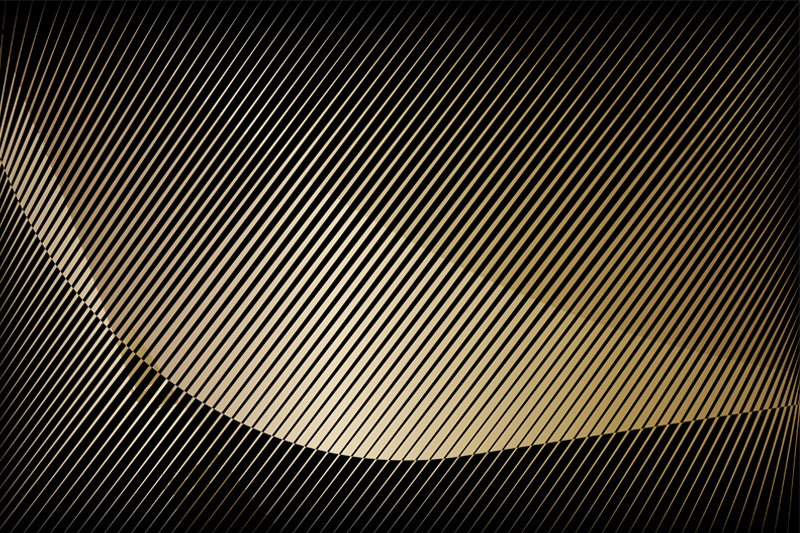
A graphic displaying a halftone pattern
Conclusion
Metallic effects are a great way to add quality to all sorts of products and there are more options than ever to choose from. So, if you’re looking to add new products to your current offering and increase your profits with digital print, get in touch with a Roland expert and we’ll be happy to help. If you’d like more information on anything mentioned in this article, please contact us today.
